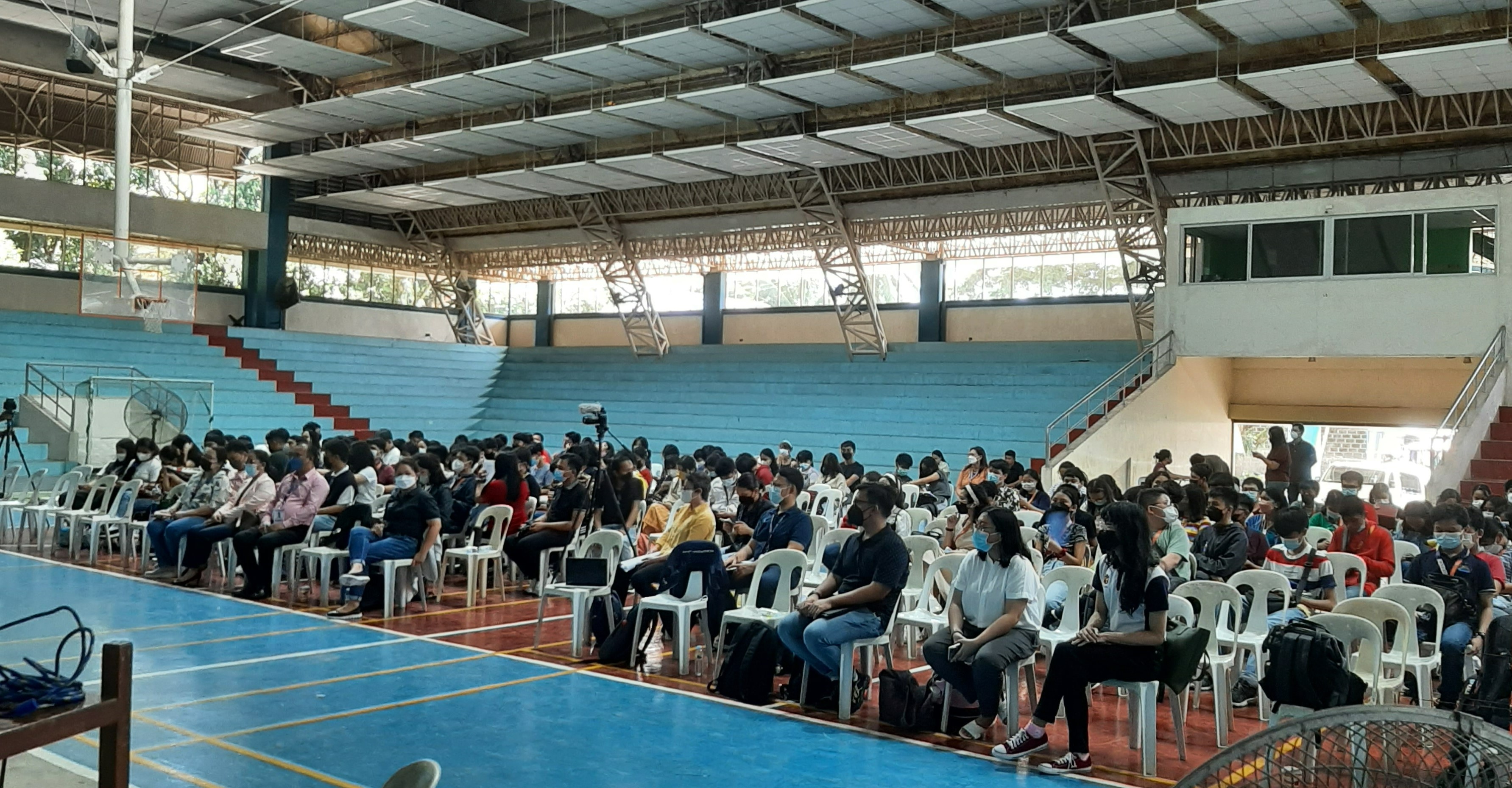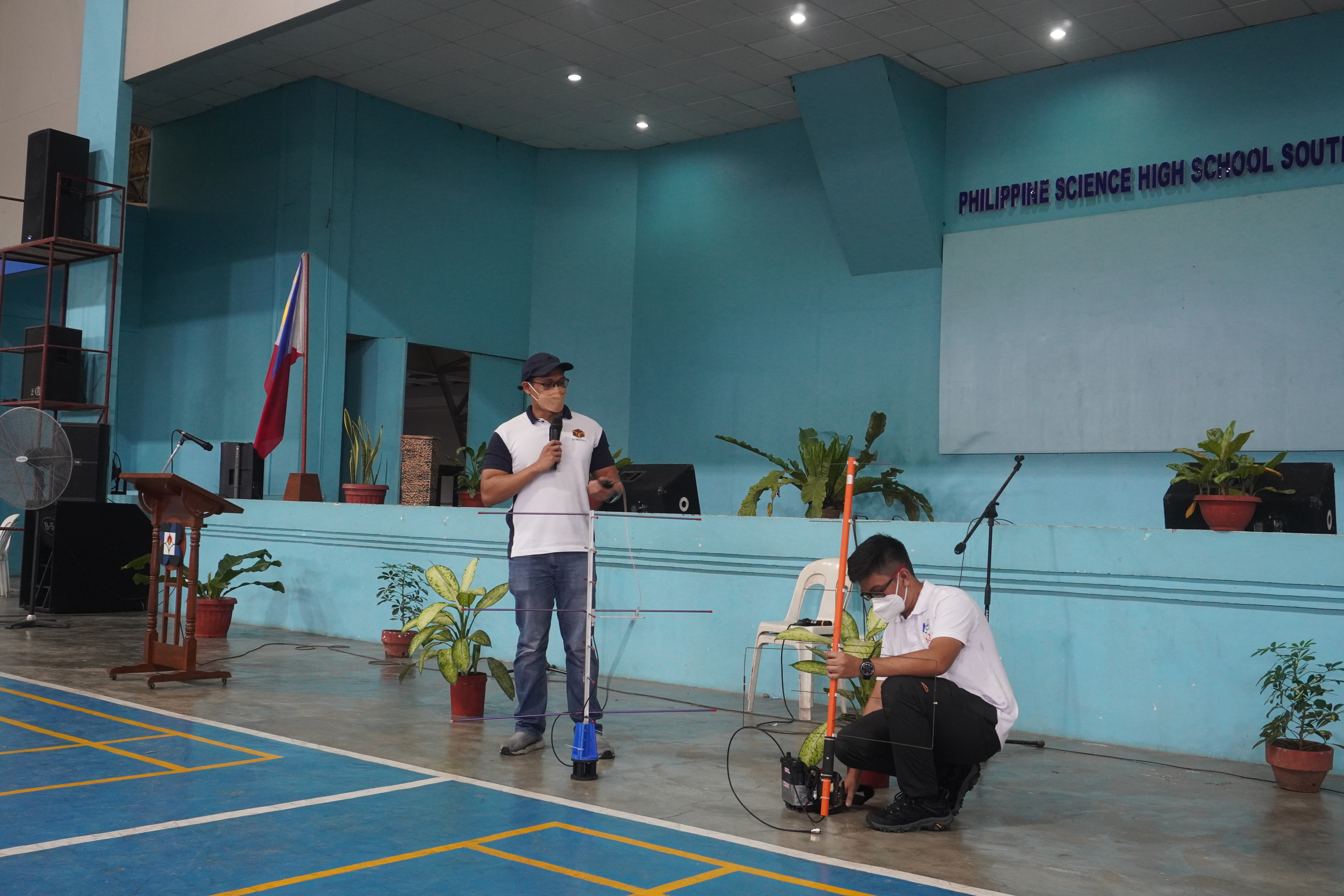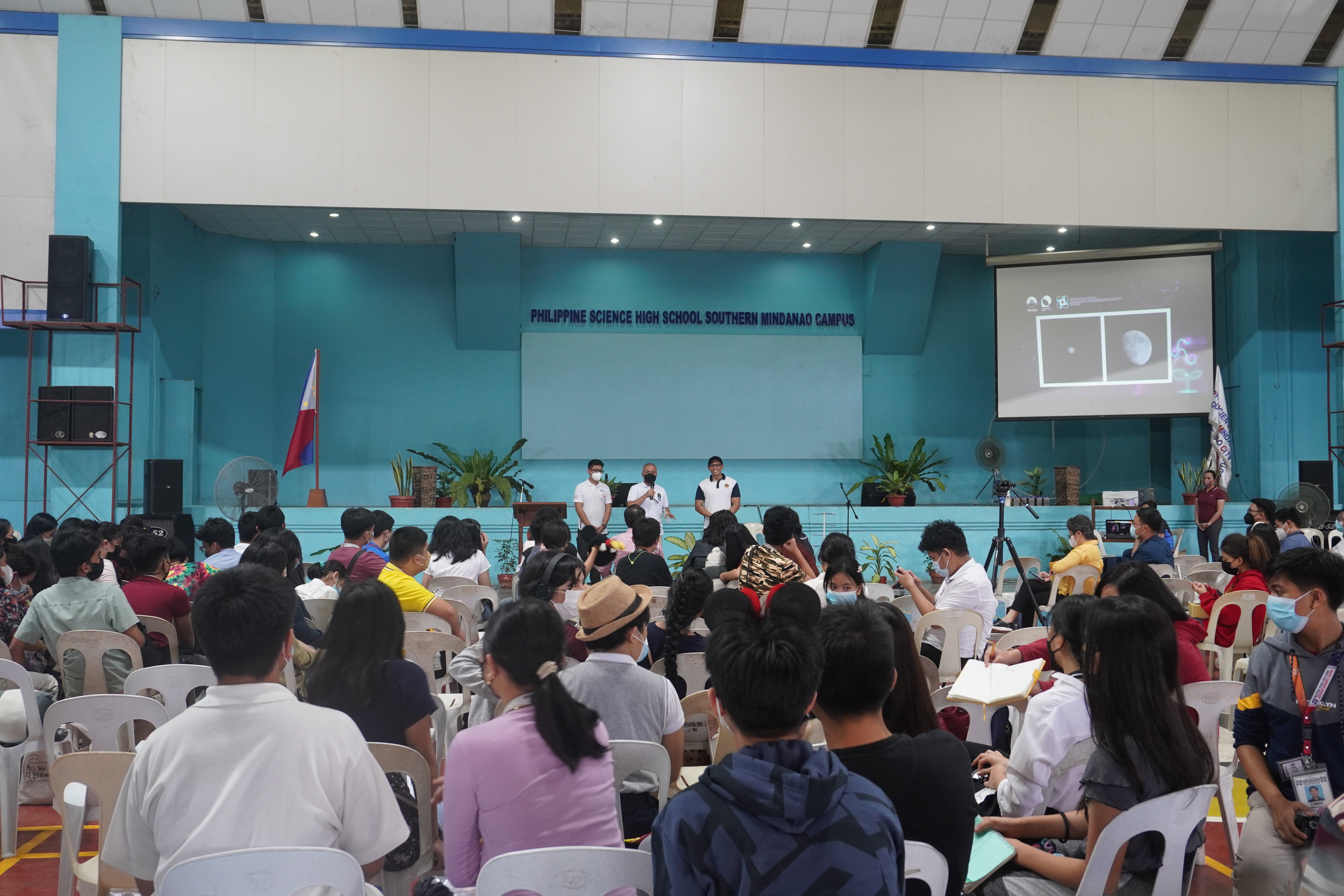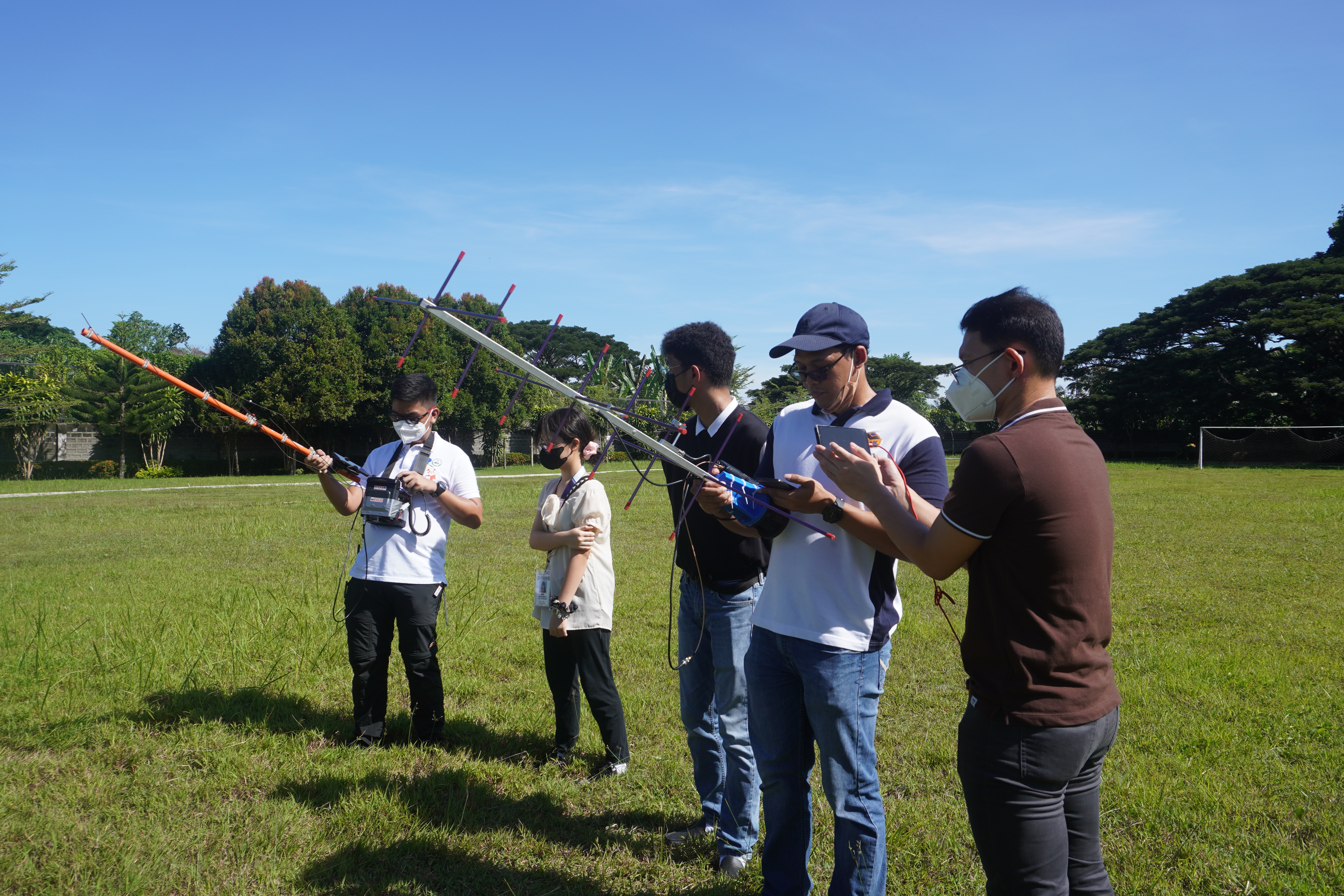At around 2 o’clock in the afternoon, Dr. IZ Bautista, a satellite engineer of the Philippine Space Agency (PhilSA), together with an amateur radio enthusiast and two science high school students, went to the Philippine Science High School Southern Mindanao Campus (PSHS SMC) grounds with their handheld radio, antenna, and satellite tracking application, to attempt to communicate with other radio operators in the country via Diwata-2. The afternoon was promising, the weather was bright and sunny, and over 160 grade 7 to 12 students in the campus gym, a few meters away, were eagerly watching the live stream of the connection attempt, hoping for it to succeed.

Participants of the Space Science and Technology Lecture and Demo awaiting the connection attempt to the Philippine microsatellite, Diwata-2
Unknown to many, the country’s second 50-kg Earth Observation satellite, deployed to orbit in 2018, also carries an amateur radio payload with an FM voice repeater and Automatic Packet Reporting System (APRS). These features allow for long-range radio communication, SMS communication, and the sending and receiving of GPS and satellite weather data.
The satellite passes over Davao City at around 2:00 PM every day. On 07 October, during World Space Week (WSW), PhilSA took advantage of this opportunity to demonstrate the satellite communication capabilities of Diwata-2. “We will try to communicate with amateur radio enthusiasts in Metro Manila…hopefully we can establish a good link through Diwata-2. In 30 seconds, Diwata-2 will be over the horizon, so standby tayo,” Doc IZ announced.
Static noises broke the half-minute muted excitement. And for the next 12 minutes, Doc IZ and the team were able to talk to radio operators in Pangasinan, Manila, Cavite, and even outside the country in Indonesia. The successful demo was followed by a lecture on satellite communications, space science, and question-and-answer sessions with students.
“We were able to show in our demonstration that a Filipino-made satellite with a locally developed component can be used for backup communication, especially during disasters where cell sites may be down,” Dr. Bautista said. “We hope that we could inspire more Filipinos to continue developing satellites and satellite components that would benefit our kababayans through the use of space science and technology applications,” he added.

Dr. Izrael Bautista (L) and Mr. John Kyl Cortez (R) showed the equipment used to communicate via Diwata-2

(L-R) Mr. John Kyl Cortez, Dr. Joel Joseph Marciano, Jr., and Dr. Izrael Bautista answered the questions PSHS SMC students had regarding the satellite communication lecture and demonstration
Experiential learning on satellites now within reach of Filipino youth
The radio demo is part of PhilSA’s launch of the Nationwide Network for Educational Satellite Terrestrial Stations or NNESTS project, which aims to help promote Science, Technology, Engineering, and Mathematics (STEM) education among students. In partnership with the Department of Science and Technology Region XI and PSHS SMC, the project kicked off in Davao featuring talks and interactive sessions that highlighted the 2022 WSW theme: Space and Sustainability.
“Satellite communication is important to sustainable development because satellites allow us to communicate over greater distances that are deemed uneconomical using terrestrial communication like putting up cell towers or cable links. Bridging the digital divide is one of the goals of sustainable development and satellite communication is being used to connect far-flung areas to the Internet and to the world,” Doc IZ explained.
In the long-term, NNESTS intends to contribute to building and sustaining human resources in the space sector.
“We can think of ‘space and sustainability’ in two ways. First of all, we all have to ensure that space is being used responsibly, safely, and peacefully as this contributes to inclusive and sustainable innovations in the outer space environment. Secondly, activities in outer space should continue helping people in terms of addressing sustainable development challenges on Earth,” PhilSA Director General Dr. Joel Joseph Marciano said.
“Showing students how to ‘talk’ to our satellites is a cool way of bringing the ‘experience of outer space’ to young people. Through this, we hope to inspire the learners to pursue studies in STEM, particularly space science and technology applications, and empower them to think about sustainable innovations in outer space,” DG Marciano added.
PhilSA Deputy Director General for Space Science and Technology, Dr. Gay Jane Perez, said: “there is no singular course or career path you need to take to be able to work in the space sector. As much as space is broad and vast, so are the paths and courses available for you to become part of our growing space ecosystem.”
In her message to PhilSA, Vice President and Education Secretary Sara Z. Duterte, acknowledged the efforts of PhilSA in promoting space science education and called on more partnerships to nurture this field of study.
“I am optimistic that the Philippine Space Agency’s influence will help push the boundaries of our STEM education and enable the passion and skills of our young people to make the right choice for higher educational pursuits. Let us cultivate more collaborations in space education and continue to bridge the gap between space exploration and our learners’ access to career pathways such as medicine, design and manufacturing, and robotics and data analytics.”
Connecting through the Diwata-2 satellite
Radio enthusiasts interested in communicating through Diwata-2 may do so by accessing the following frequencies:
RX:145.900 MHz
TX: 437.500 MHz PL tone:141.3 Hz
It is important to note that communicating via amateur radio requires a license from the National Telecommunications Commission (NTC).
–
For more information on PhilSA’s World Space Week 2022 celebration, visit our event page here.




